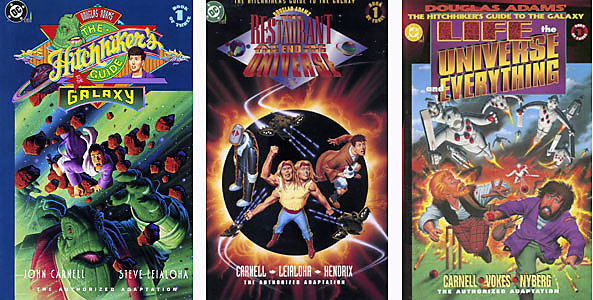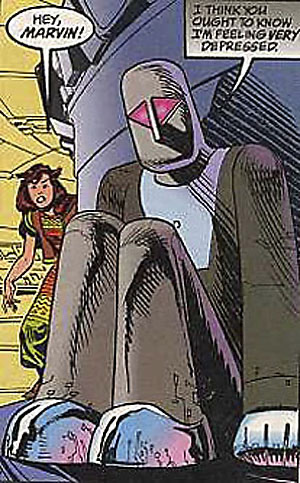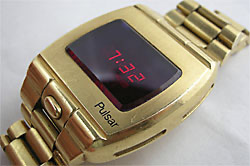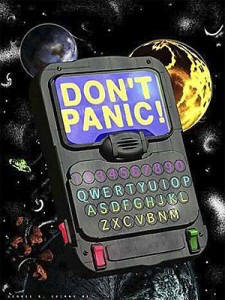Humor in science fiction is a tricky business. Few people have ever done it well. Terry Pratchett, of course; Ron Goulart; Harry Harrison; and the brilliant Douglas Adams.

Sometime in the mid-1990s, Byron Preiss signed a deal with Douglas Adams to adapt his original “Hitchhikers Guide to the Galaxy” trilogy into graphic novels, which were published by DC Comics. Each print novel was adapted into a graphic trilogy. The immensely witty and talented English writer John Carnell did the script adaptation, which Adams positively loved. The equally talented and witty American artist Steve Leialoha did the artwork for the initial trilogy. I was the series editor and project manager.

Adams had final say over script and art. Getting the characters right was a challenge, especially as the BBC-TV series was running here at that time and it was bloody frikkin’ brilliant. Steve needed to have his characterizations of Arthur Dent, Ford Prefect, Marvin the Paranoid Android, and others, resonate with their popular TV portrayals, while still carving out his own territory. His work on the book is astonishingly good. Adams gave him the hardest time over the look for Marvin. Steve must have done at least a couple dozen variations on a theme before both he and Douglas were satisfied.
Personally, I think the initial trilogy is the best body of work, collectively, that Leialoha ever did.

Adams knew we would have to edit, delete, and condense the story for the graphic adaptation, and he was very good at understanding why certain things turned out to be the way they did. But he absolutely, positively freaked in my face (metaphorically speaking) when I made a single change to the prologue of the first volume. Long story short, a character that lasts for all of about 2 or 3 panels is wearing a wristwatch. An analog wristwatch. I told Douglas I thought we should update that and make it a digital-display watch, that analog watches had fallen out of favor and it would look dated.
Douglas wrote me a two-page, single-spaced letter in response, explaining in a very detailed manner why the watch had to be analog and not digital, and why I should not assume I could make such changes anywhere else in the book. Of course, he was correct. It’s about 20 years later and here I sit with my analog watch on my wrist, which he predicted we’d all still be wearing far into the future.
Harry Harrison gave us much more leeway when we adapted “Bill, the Galactic Hero.”
